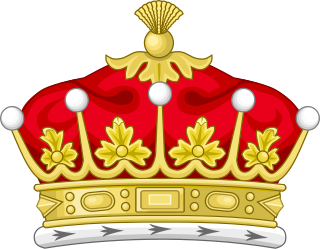 W
WEarl of Longford is a title that has been created twice in the Peerage of Ireland.
 W
WCounty Meath is a county in Ireland. It is in the province of Leinster and is part of the Mid-East Region. It is named after the historic Kingdom of Meath. Meath County Council is the local authority for the county. At the 2016 census, the population of the county was 195,044. The county town of Meath is Navan. Other towns in the county include Trim, Kells, Laytown, Ashbourne, Dunboyne, Slane and Bettystown.
 W
WThe title of Earl of Ulster has been created six times in the Peerage of Ireland and twice Peerage of the United Kingdom. Since 1928, the title has been held by the Duke of Gloucester and is used as a courtesy title by the Duke's eldest son, currently Alexander Windsor, Earl of Ulster. The wife of the Earl of Ulster is known as the Countess of Ulster. Ulster, one of the four traditional provinces of Ireland, consists of nine counties, six of which make up Northern Ireland, the remainder are in Ireland.
 W
WAngela Christina MacDonnell, Countess of Antrim, also known as Angela Antrim, was Countess of Antrim, a sculptor, a cartoonist, and an illustrator.
 W
WLouisa Jane McDonnell, VA, was the daughter of Hon. Charles Grey and his wife, Caroline Eliza née Farquhar. On 1 June 1875, Louisa married the 6th Earl of Antrim in the Chapel Royal at St. James's. They had three children:Lady Sybil Mary McDonnell, married Vivian Smith, 1st Baron Bicester. Randal McDonnell, 7th Earl of Antrim. Hon. Angus McDonnell.
 W
WHenrietta Ponsonby, Countess of Bessborough, born Lady Henrietta Frances Spencer, was the wife of Frederick Ponsonby, 3rd Earl of Bessborough; the couple were the parents of Lady Caroline Lamb. Her father, John Spencer, 1st Earl Spencer, was a great-grandson of John Churchill, 1st Duke of Marlborough. Her sister was Georgiana Cavendish, Duchess of Devonshire.
 W
WRoberte Ponsonby, Countess of Bessborough (1892–1979), was a French noblewoman who married into the English aristocracy and served as Viceregal Consort of Canada in the 1930s.
 W
WMarguerite Gardiner, Countess of Blessington, was an Irish novelist, journalist, and literary hostess. She became acquainted with Lord Byron in Genoa and wrote a book about her conversations with him.
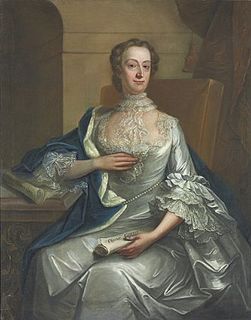 W
WEllis Bermingham was born in 1708 as Ellis (Elizabeth) Agar, daughter of James Agar and Mary Wemyss. She married, first (1726), Theobald Bourke, 7th Viscount Mayo, and after his death in 1742 married secondly (1745) Francis Bermingham, 14th Baron Athenry (1692–1750). She had no issue by either marriage.
 W
WAlice Vaughan, Countess of Carbery (1619-1689), known before her marriage as Alice Egerton, was the daughter of John Egerton, 1st Earl of Bridgewater. She was a musician and performer who acted in two notable masques: Aurelian Townshend's Tempe Restored (1632), and John Milton's Maske Performed at Ludlow Castle (1634).
 W
WFrances Vaughan was the second wife of Richard Vaughan, 2nd Earl of Carbery. Her second son, John, became the 3rd earl following his father's death in 1686.
 W
WElizabeth Jane Caulfeild was the only daughter of William Meredyth, first Lord Athlumney, and by marriage in December 1856 to James Caulfeild, 3rd Earl of Charlemont, she became the Countess of Charlemont.
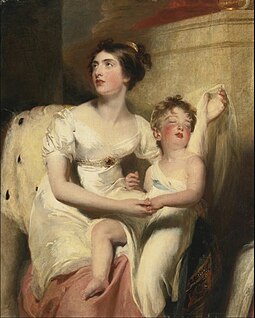 W
WAnne Caulfeild, Countess of Charlemont was an Anglo-Irish courtier. She was the first Lady of the Bedchamber appointed by Queen Victoria on her accession, serving in that capacity from 1837–54.
 W
WHarriet Bury, Countess of Charleville, formerly Harriet Charlotte Beaujolois Campbell, was an English noblewoman and author.
 W
WFrances Burke, Countess of Clanricarde and Dowager Countess of Essex was an English noblewoman. The daughter of Sir Francis Walsingham, Elizabeth I's Secretary of State, she became the wife of Sir Philip Sidney at age 16. Her second husband was Queen Elizabeth's favourite, Robert Devereaux Earl of Essex, with whom she had five children. Two years after his execution in 1601, she married Richard Burke, Earl of Clanricarde, and went to live with him in Ireland.
 W
WTheodosia Hawkins-Magill, later Countess of Clanwilliam, was a great heiress and landowner in County Down, Ireland.
 W
WBarbara Palmer, 1st Duchess of Cleveland, Countess of Castlemaine, was an English royal mistress of the Villiers family and perhaps the most notorious of the many mistresses of King Charles II of England, by whom she had five children, all of them acknowledged and subsequently ennobled. Barbara was the subject of many portraits, in particular by court painter Sir Peter Lely. In the Golden Age, it was stylish to adorn an estate with her likeness.
 W
WCatherine Fenton Boyle, Countess of Cork was an Irish aristocrat and wife of Richard Boyle, 1st Earl of Cork.
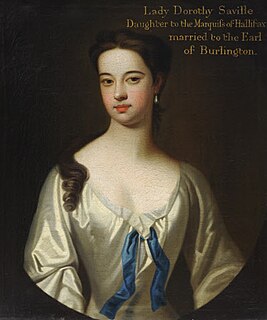 W
WDorothy Boyle, Countess of Burlington and Countess of Cork was a British noble and court official, as well as a caricaturist and portrait painter. Several of her studies and paintings were made of her daughters. Chatsworth House, which descended through her daughter Charlotte, holds a collection of 24 of her works of art.
 W
WEmily Charlotte de Burgh, Countess of Cork was a British poet, writer, and member of the Irish aristocracy.
 W
WMary Boyle, Countess of Cork and Orrery was an Anglo-Irish literary hostess.
 W
WMary Stopford, Countess of Courtown, formerly Mary Powys, was the wife of James Stopford, 2nd Earl of Courtown.
 W
WSophia Charlotte von Kielmansegg, Countess of Darlington and Countess of Leinster (1675–1725) was a German-born courtier. A half-sister of George I of Great Britain, to whom she was close, she moved to England in 1714 shortly after the Hanoverian succession, where she became an influential figure of his court.
 W
WFlorence Rose Bligh, Countess of Darnley, DBE was the Australian-born wife of Ivo Bligh, 8th Earl of Darnley.
 W
WEllen Odette Cuffe, Countess of Desart was a London-born Jewish woman who was best known as an Irish politician, company director, Gaelicist, and philanthropist in Ireland. She has been called '"the most important Jewish woman in Irish history".
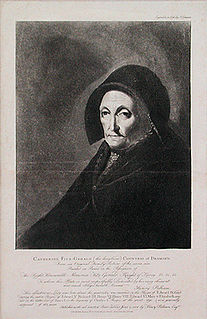 W
WKatherine FitzGerald, Countess of Desmond was a noblewoman of the Anglo-Norman FitzGerald dynasty in Ireland. English writers of the Tudor period, including Sir Walter Raleigh, helped popularise "the old Countess of Desmond" as a nickname for her, due to her longevity. One estimate placed her age at death in excess of 120 years. Another ranged as high as 140. Most likely she lived to about 100. A recent biography of the countess suggested that Katherine was at least 90 when she died.
 W
WKathleen Pelham Burn Moore, Countess of Drogheda was a British socialite, aviator, and sportswoman. She was one of the "bright young things".
 W
WMildred Acheson, Countess of Gosford was an American heiress who married into the British aristocracy.
 W
WJane Beatrice Forbes, Countess of Granard was an American-born heiress and thoroughbred horse racer.
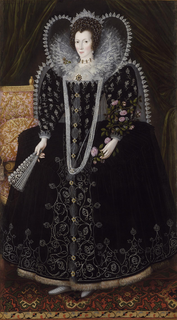 W
WFrances Howard, Countess of Kildare, courtier, and governess of Princess Elizabeth, later Queen of Bohemia.
 W
WAngela Olivia Pery, Countess of Limerick, CH GBE DStJ (1897–1981) was a leader of the International British Red Cross movements.
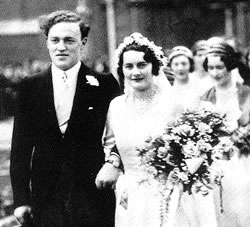 W
WElizabeth Pakenham, Countess of Longford, better known as Elizabeth Longford, was a British historian. She was a member of the Royal Society of Literature and was on the board of trustees of the National Portrait Gallery in London. She is best known as a historian, especially for her biographies of 19th-century aristocrats such as Queen Victoria (1964), Lord Byron (1976) and the Duke of Wellington (1969).
 W
WMargaret Bingham, Countess of Lucan was an English painter, copyist and poet, whose art was much admired by Horace Walpole. Her pseudonymous Verses on the Present State of Ireland made a strong protest against Britain's treatment of the country.
 W
WElizabeth Rawdon, Countess of Moira in the Peerage of Ireland was a literary patron and antiquarian; she also held five English peerages in her own right. She was born at Donington Park, Leicestershire, England and died at Moira, County Down, Ireland.
 W
WAnne Wellesley, Countess of Mornington was an Anglo-Irish aristocrat. She was the wife of Garret Wesley, 1st Earl of Mornington and mother of the victor of the Battle of Waterloo, Arthur Wellesley, 1st Duke of Wellington.
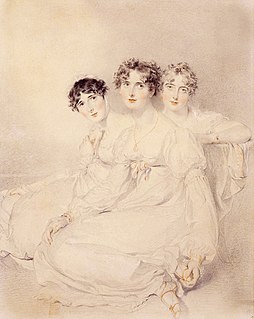 W
WKatherine Wellesley-Pole, Countess of Mornington, formerly Katherine Elizabeth Forbes, was the wife of William Wellesley-Pole, 3rd Earl of Mornington.
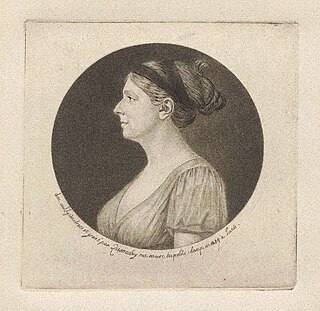 W
WMargaret King (1773–1835), also known as Margaret King Moore, Lady Mount Cashell and Mrs Mason, was an Irish hostess, and a writer of female-emancipatory fiction and health advice. Despite her wealthy aristocratic background, she had republican sympathies and advanced views on education and women's rights, shaped in part by having been a favoured pupil of Mary Wollstonecraft. Settling in Italy in later life, she reciprocated her governess's care by offering maternal aid and advice to Wollstonecraft's daughter Mary Shelley and her travelling companions, husband Percy Bysshe Shelley and stepsister Claire Clairmont. In Pisa she continued the study of medicine which she had begun in Germany and published her widely read Advice to Young Mothers, as well as a novel, The Sisters of Nansfield: A Tale for Young Women.
 W
WElizabeth Berkeley, Countess Berkeley, formerly Elizabeth Drax, was a British court official, the wife of Augustus Berkeley, 4th Earl of Berkeley.
 W
WMargaret Butler, Countess of Ormond, Countess of Ossory was an Irish noblewoman and a member of the powerful and celebrated FitzGerald dynasty also known as "The Geraldines". She married Piers Butler, 8th Earl of Ormond, by whom she had four sons and five daughters.
 W
WEmilia Butler, Countess of Ossory, born Æmilia van Nassau-Beverweerd, was an Anglo-Dutch courtier.
 W
WMargaret Cecil, Countess of Ranelagh was an English courtier. The Countess was one of the "Hampton Court Beauties" painted by Sir Godfrey Kneller for Queen Mary II.
 W
WAnne Parsons, Countess of Rosse, was an English socialite and one of the founders of The Victorian Society. She was the mother of Antony Armstrong-Jones, 1st Earl of Snowdon and Brendan Parsons, 7th Earl of Rosse.
 W
WThe Rt Hon. Mary Parsons, Countess of Rosse, was a British Irish amateur astronomer, architect, furniture designer, and pioneering photographer. Often known simply as Mary Rosse, she was one of the early practitioners of making photographs from waxed-paper negatives.
 W
WIsabella Molyneux, Countess of Sefton, formerly Viscountess Molyneux, was a British peeress and society figure.
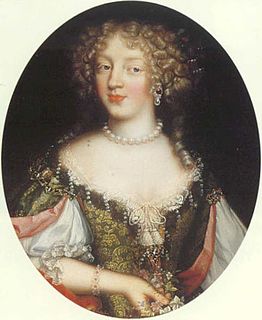 W
WFrances Talbot, Countess of Tyrconnell was a maid of honour to the Duchess of York and, like her sister Sarah, a famous beauty at the Restoration court. She married first George Hamilton and then Richard Talbot, Earl of Tyrconnell. She was vicereine in Dublin Castle while Tyrconnell was viceroy of Ireland for James II. She went through difficult times after the death of her second husband, who was attainted as a Jacobite, but recovered some of his wealth and died a devout Catholic despite having been raised as a Protestant.
 W
WLady Frances Manners, Countess of Tyrconnel.
 W
WPhilippa of Clarence was a medieval English princess and the suo jure Countess of Ulster.
 W
WMaud of Lancaster, Countess of Ulster was an English noblewoman and the wife of William Donn de Burgh, 3rd Earl of Ulster. She was the mother of Elizabeth de Burgh, suo jure Countess of Ulster. Her second husband was Sir Ralph de Ufford, Justiciar of Ireland. After Ufford's death, Maud became a canoness at an Augustinian nunnery, Campsey Priory, in Suffolk.
 W
WAnne FitzPatrick, Countess of Upper Ossory was an English noblewoman and the first wife of Augustus Henry FitzRoy, 3rd Duke of Grafton. Grafton divorced her while serving as prime minister. She was a noted correspondent of Horace Walpole.
 W
WAnna Maria Talbot, Countess of Shrewsbury was Countess of Shrewsbury from 1659 to 1668, by virtue of her marriage to Francis Talbot, 11th Earl of Shrewsbury.
 W
WAnne Hastings, Countess of Shrewsbury was an English noblewoman who served as a lady-in-waiting to Queen consort Catherine of Aragon, the first wife of King Henry VIII of England. Anne was the first wife of George Talbot, 4th Earl of Shrewsbury, by whom she had 11 children. Her maternal half-sister was Cecily Bonville, Baroness Harington and Bonville, the wealthiest heiress in late 15th-century England, making Anne the half-great-great-aunt of Jane Grey.
 W
WElizabeth Cavendish, later Elizabeth Talbot, Countess of Shrewsbury, known as Bess of Hardwick, of Hardwick Hall in Derbyshire, was a notable figure of Elizabethan English society. By a series of well-made marriages, she rose to the highest levels of English nobility and became enormously wealthy. Bess was a shrewd business woman, increasing her assets with business interests including mines and glass-making workshops.
 W
WMary Talbot, Countess of Shrewsbury (1556–1632) was the wife of Gilbert Talbot, 7th Earl of Shrewsbury.
 W
WEleanor Butler, also known as Lady Wicklow, was an Irish Labour Party politician and architect.